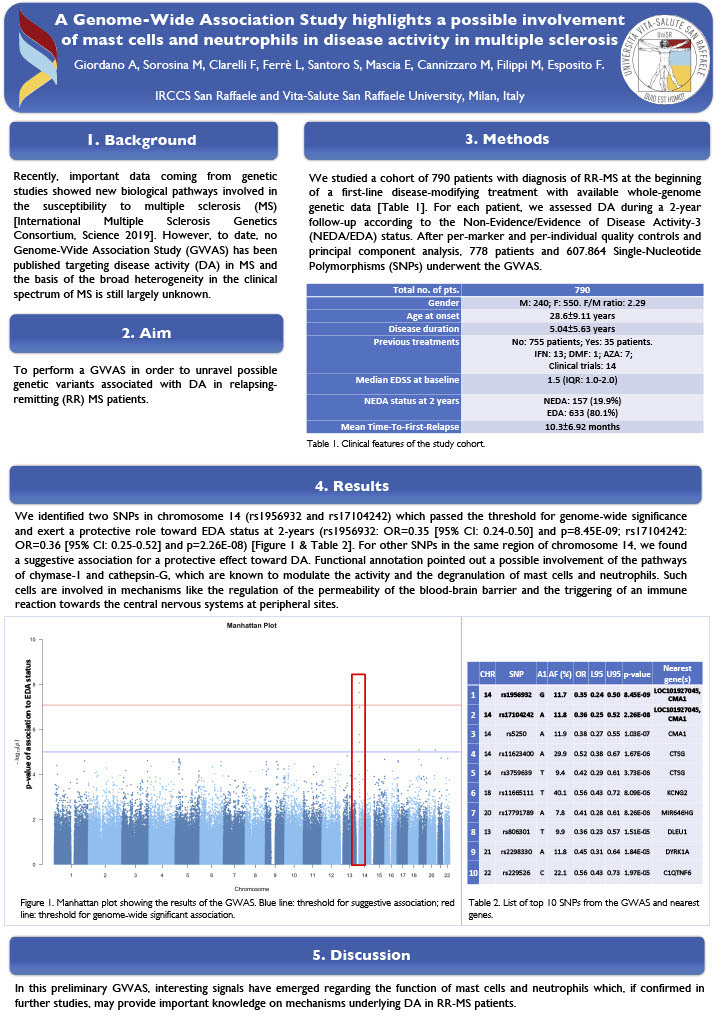A Genome-Wide Association Study highlights a possible involvement of mast cells and neutrophils in disease activity in multiple sclerosis
Abstract
Background:
Recently, important data coming from genetic studies showed new biological pathways involved in the susceptibility to multiple sclerosis (MS) [International Multiple Sclerosis Genetics Consortium, Science 2019]. However, to date, no Genome-Wide Association Study (GWAS) has been published targeting disease activity (DA) in MS and the basis of the broad heterogeneity in the clinical spectrum of MS is still largely unknown.
Aim:
To perform a GWAS in order to unravel possible genetic variants associated with DA in relapsing-remitting (RR) MS patients.
Methods:
We studied a cohort of 790 patients with diagnosis of RR-MS at the beginning of a firstline disease-modifying treatment with available whole-genome genetic data. For each patient, we assessed DA during a 2-year follow-up according to the Non-Evidence/Evidence of Disease Activity-
3 (NEDA/EDA) status. After per-marker and per-individual quality controls and principal component analysis, 778 patients and 607.864 Single-Nucleotide Polymorphisms (SNPs) underwent the GWAS.
Results and discussion:
We identified two SNPs in chromosome 14 (rs1956932 and rs17104242) which passed the threshold for genome-wide significance and exert a protective role toward EDA status at 2-years (rs1956932: OR=0.35 [95% CI: 0.24-0.50] and p=8.45E-09; rs17104242: OR=0.36 [95% CI: 0.25-0.52] and p=2.26E-08). For other SNPs in the same region of chromosome 14, we found a suggestive association for a protective effect toward DA. Functional annotation pointed out a possible involvement of the pathways of chymase-1 and cathepsin-G, which are known to modulate the activity and the degranulation of mast cells and neutrophils. Such cells are involved in mechanisms like the regulation of the permeability of the blood-brain barrier and the triggering of an immune reaction towards the central nervous systems at peripheral sites.
Conclusion:
In this preliminary GWAS, interesting signals have emerged regarding the function of mast cells and neutrophils which, if confirmed in further studies, may provide important knowledge on mechanisms underlying DA in RR-MS patients.

